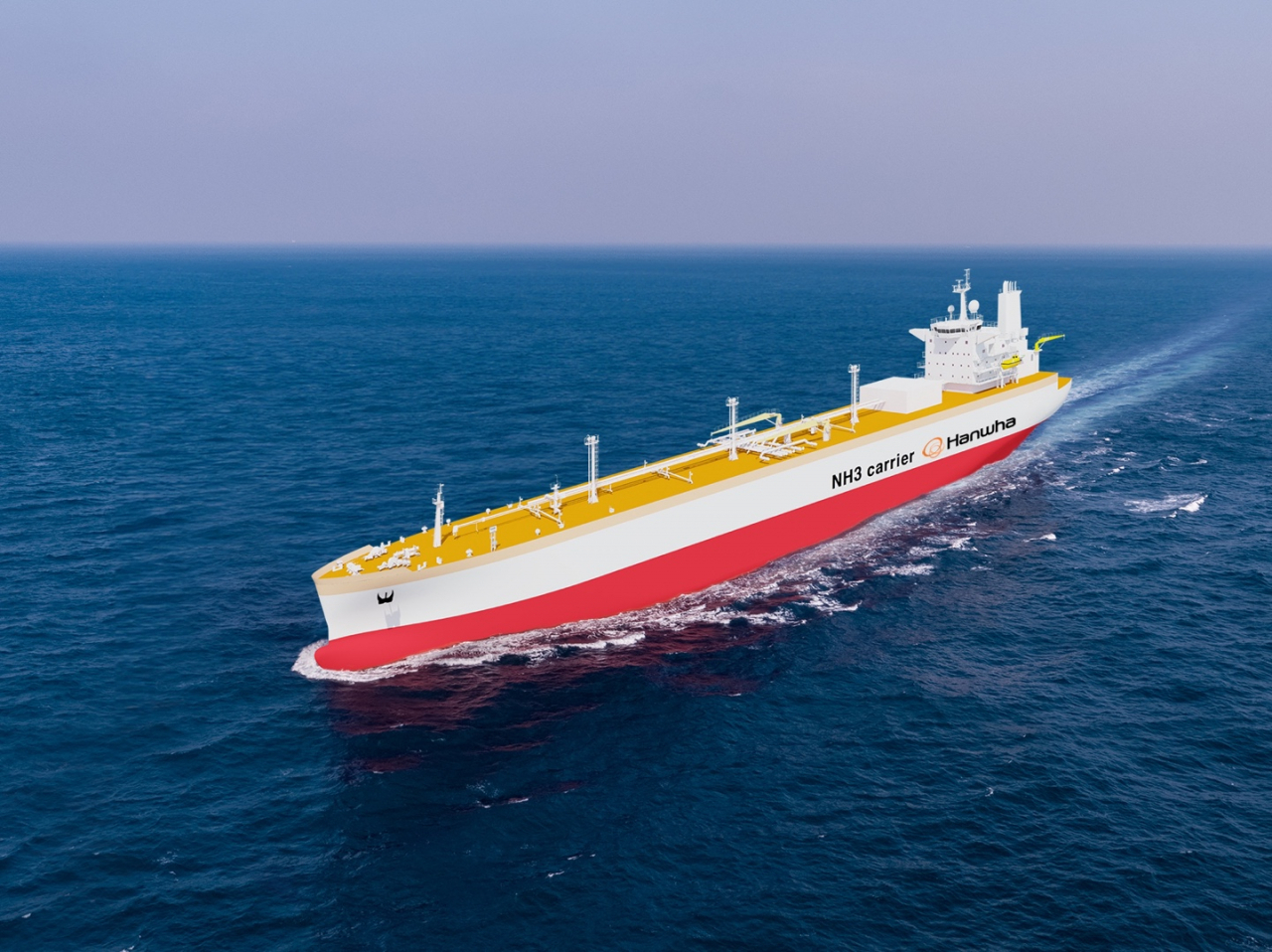 |
Hanwha Ocean's NH3 (ammonia) carrier. (Hanwha Ocean) |
As the maritime industry navigates towards a greener future, the demand for vessels meeting stringent carbon reduction regulations is increasing in line with the International Maritime Organization's goal of carbon neutrality by 2050. With over 100,000 vessels collectively emitting nearly a billion metric tons of carbon dioxide annually, the call to action is more urgent than ever.
In South Korea, Hanwha Ocean, a major shipbuilding and offshore company, is at the forefront of this environmental push by leveraging its proprietary green and sustainable solutions.
Smart ship technology is a key solution that monitors a vessel’s carbon intensity index according to the IMO’s Carbon Intensity Indicator. This technology assesses a ship's carbon dioxide emissions while it is operating. If a vessel receives a grade of D for three consecutive years or a grade of E once, from a range of A to E, it will be restricted from sailing. Hanwha Ocean’s smart ship platform, HS4, automatically calculates the grade and provides optimal sailing routes and speeds to minimize carbon dioxide emissions.
The Shaft Generator Motor is another notable technology. The SGM, which has a shaft connected to a generator and propeller, converts kinetic energy from rotation into electricity. By reducing the need for conventional fuel or electricity generators, carbon dioxide and sulfur oxide emissions decrease. The SGM is used in various vessels, such as Liquid Natural Gas carriers, Liquid Petroleum Gas carriers, and very large crude carriers.
For fuel efficiency, the Air Lubrication System creates a layer of bubbles beneath a vessel's hull to minimize frictional resistance, enabling the ship to move more smoothly through the water while consuming less fuel. When used with the SGM, ALS can reduce fuel consumption by five to seven percent annually, saving up to a year and six months of fuel costs over the average 20-year lifespan of a vessel. ALS has been effectively used in more than 60 vessels.
Hanwha Ocean has also acquired the Rotor Sail, a cylindrical structure installed on the deck of a vessel. Using the Magnus effect, wind energy is converted into additional propulsion force, reducing fuel consumption by more than five percent per the IMO’s energy efficiency index. The technology received the Approval in Principle by the Norwegian classification society, Det Norske Veritas, in 2021.
Beyond the vessel’s hull, Hanwha Ocean is also eyeing capturing and repurposing carbon from vessel operations. The Onboard Carbon Capture System captures carbon dioxide using sodium hydroxide, converting it into a mineral form. This technology results in substantially lower carbon dioxide levels of by-products compared to other carbon capture methods.
Hanwha Ocean also offers an alternative OCCS method using amine, a commonly used carbon capture technology due to its ability to bind with carbon dioxide. This method traps carbon dioxide in the absorber and releases the remaining exhaust, free of carbon, into the air. By providing sodium hydroxide and amine options, Hanwha Ocean offers a broader selection of carbon capture technologies.
“We possess versatile eco-friendly technologies that can reduce carbon emissions while efficiently sailing vessels,” a Hanwha Ocean official said. “We will invest more into zero-carbon emission technology research and development, leading to even more sustainable solutions within the ocean industry.”







